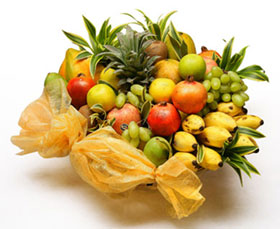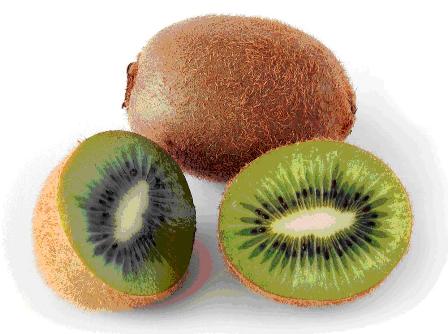
High-fiber foods have been shown to reduce the risk of cardiovascular disease and to help to keep your digestive system healthy. Find out which foods are high-fiber foods.

Dietary Fiber
Dietary fiber is only found in plants, and functions like a skeleton to help maintain their shape and structure. Humans eat plants but we cannot digest the fiber so it passes through the small intestine into the colon. The fiber helps to keep the colon healthy. Some disorders like diverticulitis, constipation and irregularity may be connected with not getting enough fiber in the diet.
Types of Dietary Fiber
Insoluble fiber is the type of dietary fiber found in high-fiber foods like whole grains, nuts, wheat bran and vegetables. Insoluble fiber does not dissolve in water so it helps to move material through the colon faster by increasing the bulk of the stool. This can be very helpful to people who suffer from constipation or irregularity. Diets high in insoluble fiber may also decrease the risk of diabetes.Soluble fiber is also found in many high-fiber foods like oats, citrus fruits, apples, barley, psyllium, flax seeds and beans. Soluble fiber absorbs water, which helps to soften stools making them easier to eliminate from the body. Some soluble fibers, like beta glucan found in oats, bind to bile acids in the intestinal tract. Bile acids contain cholesterol and normally your body reabsorbs some of those bile acids, but when their bound to beta-glucan, they are eliminated through the stool. This reduces the amount of bile reabsorbed into your blood, and in turn helps to lower cholesterol levels. Research shows high-fiber diets with this type of soluble fiber has been shown to reduce cholesterol closer to healthy levels.

High-Fiber Foods
According to the Institute of Medicine:- The recommended intake for total fiber for adults 50 years and younger is set at 38 grams for men and 25 grams for women, while for men and women over 50 it is 30 and 21 grams per day, respectively, due to decreased food consumption.
Here are some examples of delicious and healthy high-fiber foods from the USDA National Nutrient Database:
- one-half cup cooked navy beans - 9.5 g
- one-half cup baked beans, canned – 9 g
- one-half cup cooked lentils – 7.8 g
- one-half cup cooked black beans – 7.5 g
- one-half cup dates – 7.1 g
- one cup raisin bran cereal – 7 g
- one-half cup cooked kidney beans – 6.5 g
- one-half cup cooked lima beans – 6.7 g
- one-half cup canned tomato paste – 5.9 g
- one-half cup cooked garbanzo beans – 6.2 g
- one-half cup bean with ham soup – 5.6 g
- one-half cup frozen red raspberries – 5.5 g
- one medium bran muffin – 5 g
- one-half Asian pear – 5 g
- one-half cup cooked artichoke – 4.5 g
- one-half cup frozen peas, cooked – 4.4 g
- one cup oatmeal – 4 g
- one-half cup frozen mixed vegetables, cooked – 4 g
- one-half cup raw blackberries – 3.8 g
- one-half cup canned pumpkin – 3.5 g
- one-half cup cooked whole-wheat spaghetti – 3.4 g
- 24 almonds – 3.3 g
- one apple with skin – 3.3 g
- one-half cup cooked barley 3 g
- one medium orange 3 g
- one cup broccoli – 2.4 g
- one red sweet pepper – 2.4 g
- one nectarine – 2.3 g
- 28 peanuts – 2.3 g
- one slice whole grain bread – 2 g
- 15 walnut halves – 2 g

Fiber Supplements
Fiber supplements are available and may be added to a low-fiber diet, but fiber supplements shouldn't replace high-fiber foods in your diet because high-fiber foods are usually high in vitamins and minerals as well.By Shereen Jegtvig
No comments:
Post a Comment